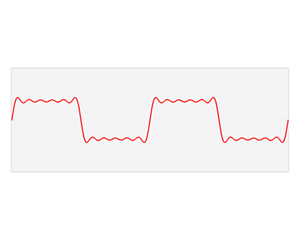Sound – Feedback
Seemingly one of the great mysteries of running sound is the source and cause of feedback. Perhaps the greatest sin one can commit behind the sound board is allowing feedback. Running sound truly is a thankless job. If everything is going right, no one takes notice. So thank your soundman today!
Since we paid attention at math in school, can we use math to understand feedback? The answer, to all of our relief, is a resounding “yes”. Incredibly, the language of mixing and sound is entirely one of engineering (as is perhaps all of reality), which makes me happy.
Feedback implies the idea of a loop. All the math we need to understand feedback is multiplication and the concept of “unity“, or 1, meaning if you multiply this number by itself, you get this number back again.
But, if you multiply this number by a number smaller than itself, you get a smaller number, and if you keep multiplying, the numbers keep getting smaller. Similarly, if you multiply this number by a number larger than itself you get a larger number, and if you keep multiplying, the numbers keep getting larger. This is the essence of a feedback loop and why it can seem to hang on a knife’s edge – because it does.
To be clear, the loop we are talking about is sound that goes into a microphone, then into a mixing board where it might get EQ’d, then over to an amplifier, and then out via main and/or monitor speaker.
The loop occurs when some of that sound leaks back into the microphone. If the amount of sound that leaks in is greater than 1x what it was originally, by even a tiny little bit like 1.001 x bigger, that sound will start feeding back on itself and continue getting louder. If it’s smaller, like .9999, that sound may ring momentarily, but it will die out.
Knowing what we know then about the nature of sound, that the atoms of sound are sine waves, this feedback could occur at any frequency that our sound system is capable of making, which is another reason we cut and try not to boost gain at a specific frequency using EQ.
Furthermore, the acoustics of the room will come into play as every room will have a bunch of resonant frequencies (just like a coke bottle or flute) that will be more prone to build gain. And even the angle of the microphone with respect to the speakers will have a role, as some mics reject on the side purposefully for this reason.
Positive feedback like we discussed above is ultimately unstable and applied socially can be unhealthy. Positive feedback can make a diva or a spoiled child. Negative feedback is required for stability.








